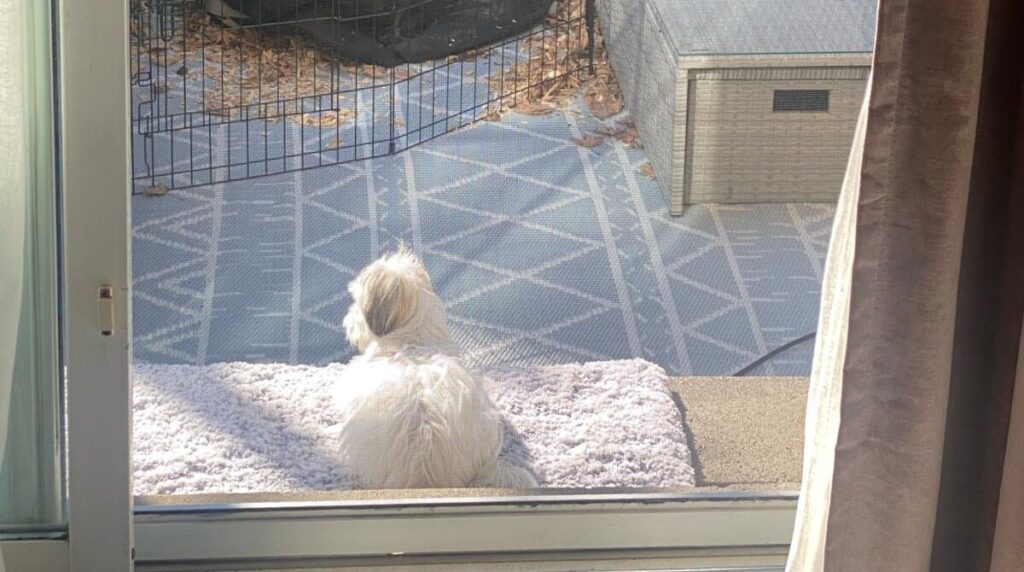
See the dog in the window? I have seen this dog in the neighborhood since his family brought him home. I have seen him sitting or lying down right there at the window where he has a bed provided. Many times, I’ve seen him bark at dogs passing by, at times scaring and startling them. I have seen him scratch the windowsill and bite and shake his bed.
Out in the neighborhood, more than once I’ve seen his leg bandaged. And just about every time, we see him reacting to the other dogs on the street, just as he does when looking out the window. You think we would put two and two together but we don’t. The years have gone by and our boy here is now grey at the muzzle, and still on his post at the window.
What we allow dogs to practice at home, they will take outside. In the dog’s mind, what is the difference between being able to police from inside and being able to police when outside? Inconsistent expectations drive behavior issues – this dog is allowed to practice at home the very behavior he is reprimanded for when out and about.
Dogs are territorial creatures. They understand the concept of boundaries, of home and turf. That’s why one of the four pillars of the Way of Life Method is Managing Space and Boundaries. Dogs slice the world into spaces and these spaces are separated by boundaries. Boundaries are hugely meaningful for dogs, a genetically inherited trait from wolves whose very survival depends on maintaining the integrity of their territory. Territorial battles are a primary cause of death among wolves, that’s how crucial these boundaries are.
In any space you find yourself in with your dog – regardless of whether indoors or outdoors – make a mental note of the boundary of that space. Territorial boundaries include the fence line of your home and yard, the walls of a room including doors and windows, the walls in the inside of our vehicle (another reason why it matters that we crate dogs in vehicles), and so on. Beyond the territorial line is another “world,” and our dogs know that.
By keeping dogs off these boundaries, we reduce their natural territorial tendency and secure them by signalling that we’re the ones responsible. When we let our dogs on boundaries, we’re in effect sending them to the frontlines before their time, placing a burden of responsibility to defend that they’re not ready for, driving anxious and reactive behavior – at boundaries and when out and about.